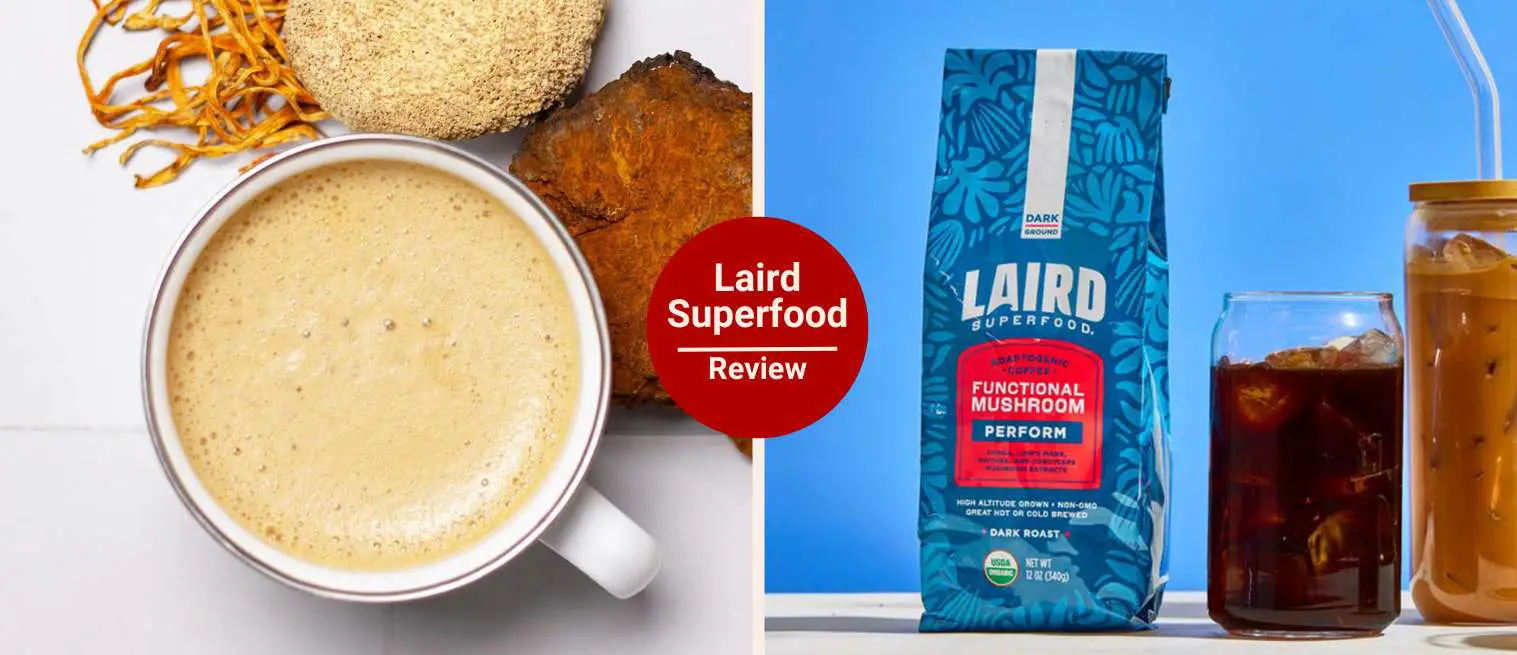Laird Superfood Mushroom Coffee Review (2025 Guide)
Do you ever wonder if all mushroom coffees taste the same?
I’ve been reviewing several mushroom brands lately, and it’s interesting how each one is slightly different. Some lean creamy, others taste closer to tea, and then there’s Laird Superfood Mushroom Coffee. I have to say, a blend that really surprised me!
In fact, Laird Superfood takes a bolder approach, keeping that strong coffee flavor front and center while still working in the benefits of lion’s mane, chaga, and cordyceps.
In this review, you’ll discover what makes Laird stand out, from its ingredients and taste to the benefits, downsides, and how it stacks up against competitors like Four Sigmatic, Ryze, and MUD/WTR.
By the end, you’ll know whether this is the right coffee for you or not. So let’s start brewing!
What Is Laird Superfood Mushroom Coffee?
Laird Superfood has this whole philosophy of clean and plant-based fuel. For this reason, they’re not into artificial junk, fillers, or weird blends.
Everything they make leans toward simple but functional, whether it’s coffee, creamers, or their mushroom powder supplements. For their mushroom coffee, Laird chose some of the most respected functional mushrooms:
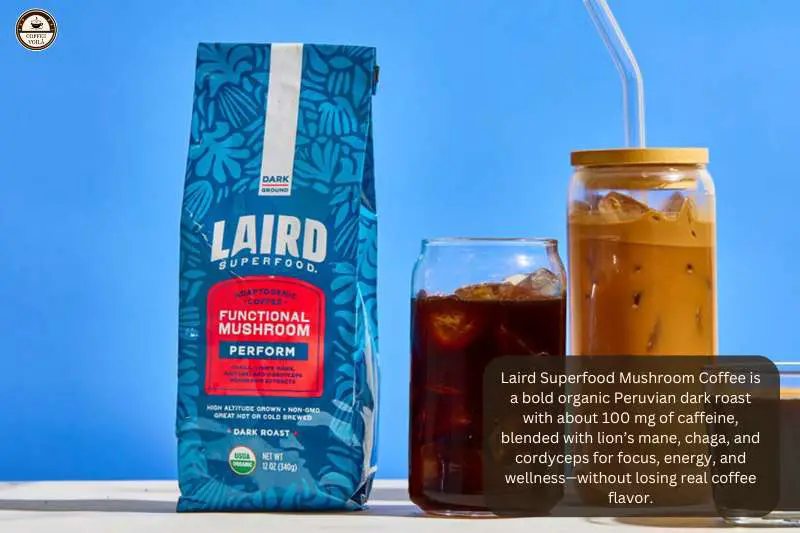
- Chaga: Known as the “King of Mushrooms,” often used for immune support and antioxidants.
- Lion’s Mane: The brain booster. Studies link it with focus, clarity, and memory support.
- Cordyceps: Popular with athletes for stamina and natural energy.
Some blends even sneak in Maitake, a mushroom long valued for vitality and overall wellness.
What I liked right away was that you don’t taste the mushrooms at all. Instead, you notice a bold, rich dark roast, grown high in the Peruvian mountains at over 4,000 feet, hand-picked, and small-batch roasted.
The beans are organic, non-GMO, and the grind works with pour-overs, drip, French press, you name it.
What’s the main difference?
Many mushroom coffees on the market either taste like watered-down tea or cut back on caffeine so much that the cup feels weak.
I’ve tried brands where one cup barely had as much caffeine as green tea. With Laird Superfood, you’re getting a real cup of coffee first and foremost.
It has around 100 mg of caffeine per tablespoon brewed in 12 oz of water. That’s why it feels closer to your regular morning brew.
So, the difference?
Well, Laird doesn’t make you choose between flavor and function. It’s robust, dark, and bold like a traditional coffee. However, you still get the adaptogenic support from mushrooms like lion’s mane and cordyceps.
Notes: If you’re someone who hates compromising on taste but still wants the wellness perks, that’s where Laird really stands out compared to lighter, latte-style brands like Ryze or MUD/WTR.
Laird Superfood Mushroom Coffee Benefits & Downsides
Like with any functional coffee, there are some clear wins and a few trade-offs.
I’ve tested this brand enough times to notice both the perks and the little drawbacks, and laying it all out helps you decide if it’s worth brewing in your own kitchen. So here’s what you should consider:

| Benefits | Why It Matters |
|---|---|
| Smooth, steady energy | With about 100 mg of caffeine per tablespoon, it feels like a real cup of coffee without the harsh jitters or mid-day crash. Perfect balance if you need focus without overdoing it. |
| Cognitive support | Thanks to lion’s mane, some users (myself included) notice sharper focus and even calmer concentration. It’s especially helpful for those of us who struggle with distraction. |
| Performance boost | Cordyceps is included for stamina and endurance. Great if you’re into workouts or just want to avoid that afternoon slump. |
| Immune support | Chaga brings antioxidants and traditional immune benefits. You won’t “feel” this instantly, but over time it’s one of the reasons people keep it in their routine. |
| Coffee-first flavor | Unlike Ryze or MUD/WTR, this actually tastes like a bold Peruvian roast. If you love traditional coffee but want functional perks, that’s a big win. |
| Downsides / Side Effects | What to Expect |
|---|---|
| Higher price point | It costs more than your average bag of coffee. Subscriptions help, but it’s still an investment. |
| Earthy undertones | Most people don’t taste the mushrooms, but some do notice a faint woody/earthy finish. If you’re super picky about flavor, that could be a deal-breaker. |
| Not for everyone | Still contains caffeine (not great if you’re ultra-sensitive), and those with mushroom allergies should avoid it completely. |
Notes: The benefits outweigh the downsides if you’re looking for a coffee that tastes authentic while providing a wellness edge. But if you’re only after cheap caffeine, this probably isn’t the brew for you.
Who Should Try It?
Not every mushroom coffee is for everyone, but Laird Superfood definitely has its sweet spot. I’ve noticed there are a few types of people who really click with this blend.
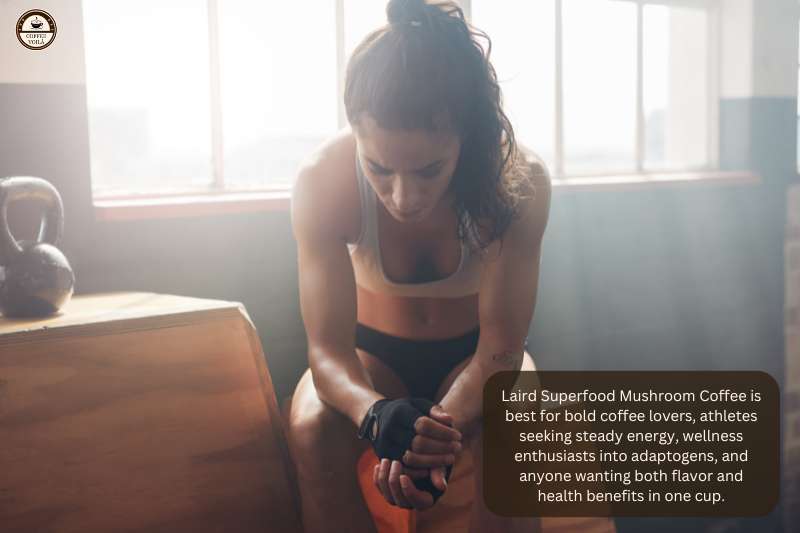
1 – Coffee drinkers who want bold flavor
If you’re the kind of person who enjoys the strong bite of a dark roast, this one’s for you. A lot of mushroom coffees taste more like tea or hot cocoa (looking at you, MUD/WTR).
However, Laird keeps that rich, Peruvian coffee front and center. The mushrooms are there for benefits, not taste, so you won’t feel like you’re sipping soup.
2 – Athletes or active folks
I used to drink it before morning workouts, and cordyceps gave me enough endurance without the crash. It feels different from a sugary pre-workout, more natural and steady. If you’re into running, lifting, or even long hikes, this blend fits nicely into a performance routine.
3 – Wellness-focused consumers
This is the group that loves adaptogens, probiotics, and superfood creamers. If you’re already sprinkling chia seeds into your smoothies, lion’s mane and chaga won’t scare you. It’s a good way to sneak brain and immune support into something you’re already drinking daily.
4 – Anyone craving balance
For me, the biggest win is that you don’t have to sacrifice taste for wellness, or wellness for taste. If you want a coffee that supports your body and still feels like a proper brew, this is probably the one to try.
Laird Superfood: Price & Where to Buy
Figuring out what Laird mushroom coffee costs and whether it’s worth it isn’t complicated. It really comes down to price per bag, subscription perks, and where you shop.
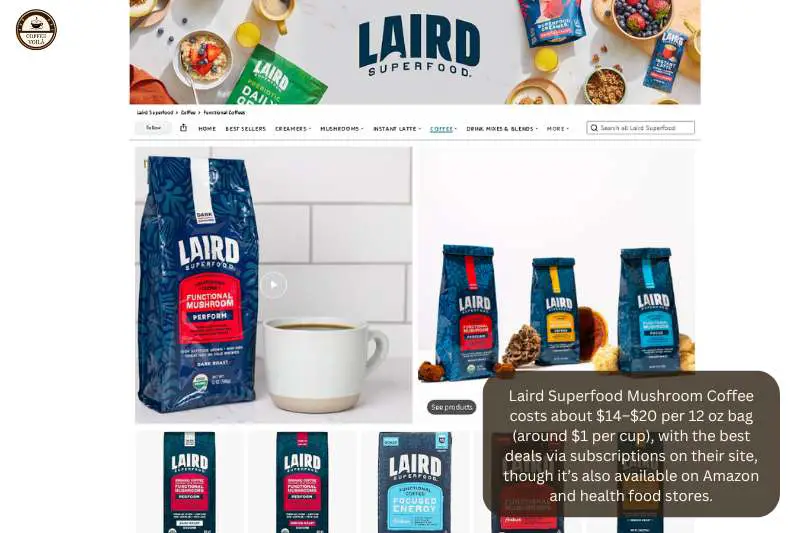
Price Range per Bag & Servings
A standard 12 oz bag of Laird Superfood mushroom coffee typically ranges from $14 to $20. This depends on the roast and where you purchase it.
If you’re brewing a tablespoon per 8–12 oz cup, that puts the cost at about $1 per serving. That’s more expensive than grocery store coffee, sure, but cheaper than dropping $4 at a café.
Available at Amazon and Health Food Retailers
You can grab Laird on Amazon, and I’ve even spotted it at my local Whole Foods and smaller wellness shops. Sometimes, Amazon offers bundle deals.
But I’ve noticed that the freshest stock usually comes straight from Laird’s own site. That’s where I go when I want to be sure I’m getting a recently roasted batch.
Laird Superfood vs Other Mushroom Coffees
When someone asks me which mushroom coffee to try first, I always say: “- Well, pick the one that matches your taste and routine.” So, here’s how they differ:
Laird vs Four Sigmatic (bolder taste vs smoother, lighter taste)
Laird is coffee-forward, bold, and dark-roasted. Meanwhile, Four Sigmatic’s Think blend leans smoother, with nutty, dark chocolate notes.
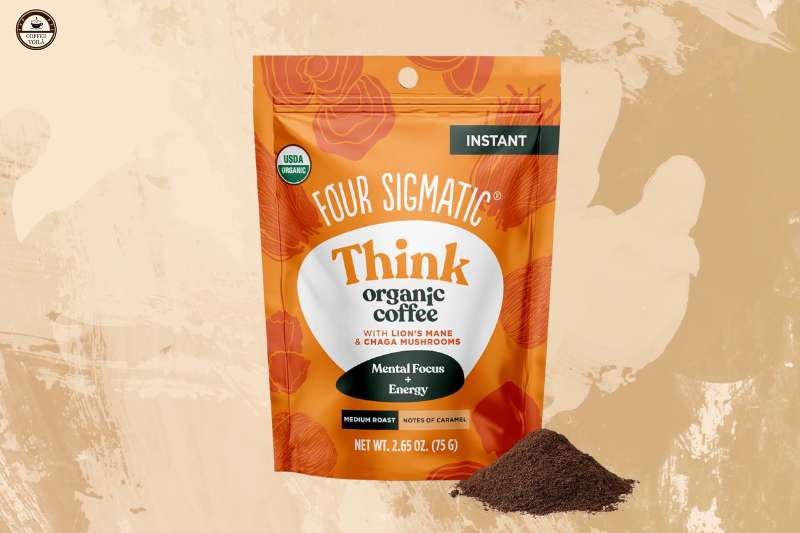
Both use lion’s mane and chaga. However, Four Sigmatic has a lighter body and is tested for mold/mycotoxins. If you want strong coffee flavor, go Laird. If you’d rather have a gentler, easy-sipping cup, Four Sigmatic fits the bill.
Tip: Four Sigmatic tastes best hot. But once it cools, it can have a slight silt at the bottom of the mug.
Laird vs Ryze (strong coffee flavor vs creamy latte feel)
Laird = strong, traditional coffee flavor. Ryze = a creamy latte feel from the start.
The reason is Ryze blends instant Arabica with MCT oil and coconut milk and a 6-mushroom mix (~48 mg caffeine/serving). It’s convenient and tastes smoother (almost café-style with milk).
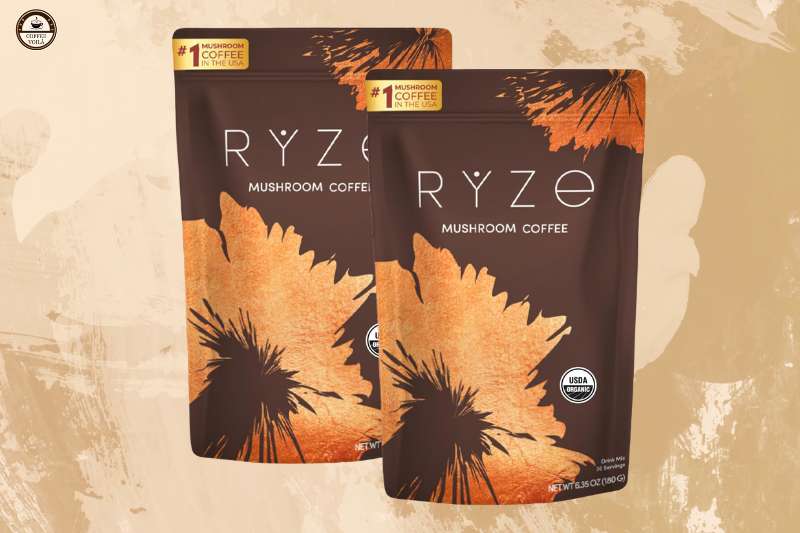
However, some folks get a little sediment in iced versions. If you want that bold “real coffee” punch, Laird. If you want creamy coffee and lower caffeine, Ryze.
Pro move: Froth Ryze with oat milk; it hides any graininess and tastes like a light mocha if you add cacao.
Laird vs MUD/WTR (coffee-based vs cacao/spice blend)
MUD/WTR is a spiced, tea-based alternative (similar to chai coffee). It about 35 mg caffeine (black tea), Matcha ~55 mg, Turmeric and Rest are 0 mg.
You also have full-spectrum mushrooms and botanicals (turmeric, cacao, cinnamon, etc.) This means it can taste earthy and bitter for some people.
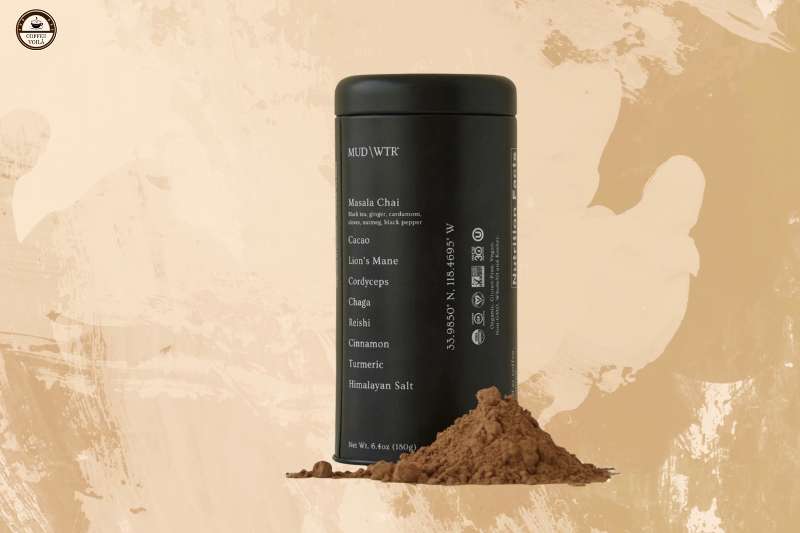
Anyway, it’s great if you like bold spice, but not so great if you want a classic coffee.
Notes: If you’re sensitive to botanicals (or on meds), MUD/WTR’s spice/adaptogen stack deserves a quick chat with your doc.
Last Thoughts: Should You Give It a Try?
If you’re curious about mushroom coffee but don’t want to give up the boldness of a real cup, Laird Superfood is a safe bet.
You get strong flavor, functional mushrooms, and steady energy without feeling gimmicky.
My suggestion is to brew it hot and enjoy it black first to catch the roast’s richness, then experiment with oat milk or creamers if you prefer a smoother sip.
At the end of the day, it comes down to what you want from your coffee. Do is it pure flavor, added wellness, or maybe a bit of both? That’s where Laird fits nicely.
So, what do you think: would you swap your regular brew for a functional one? Have you tried Laird or any of the other mushroom coffee brands yet? Go below and drop your thoughts and with that… voilà!

